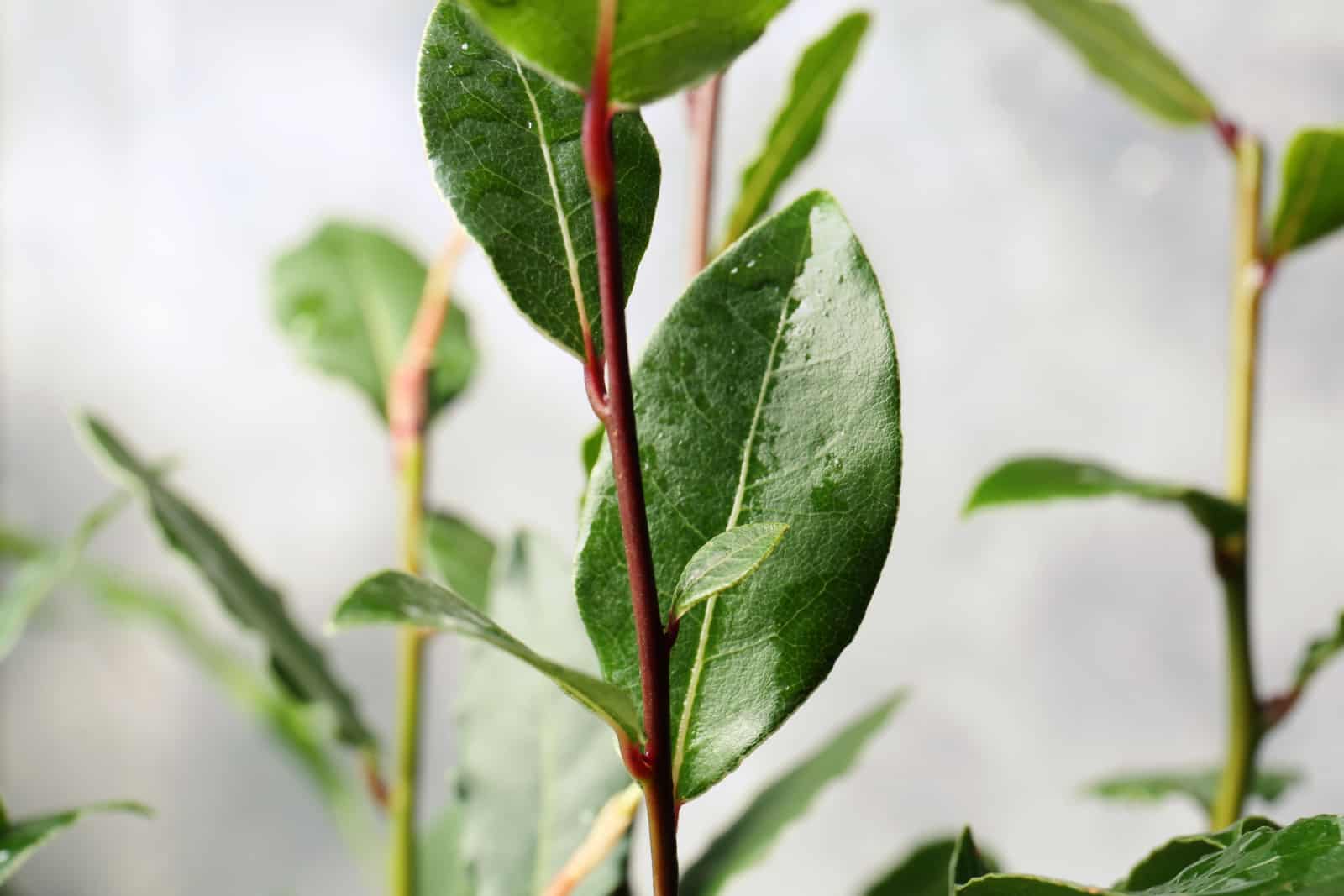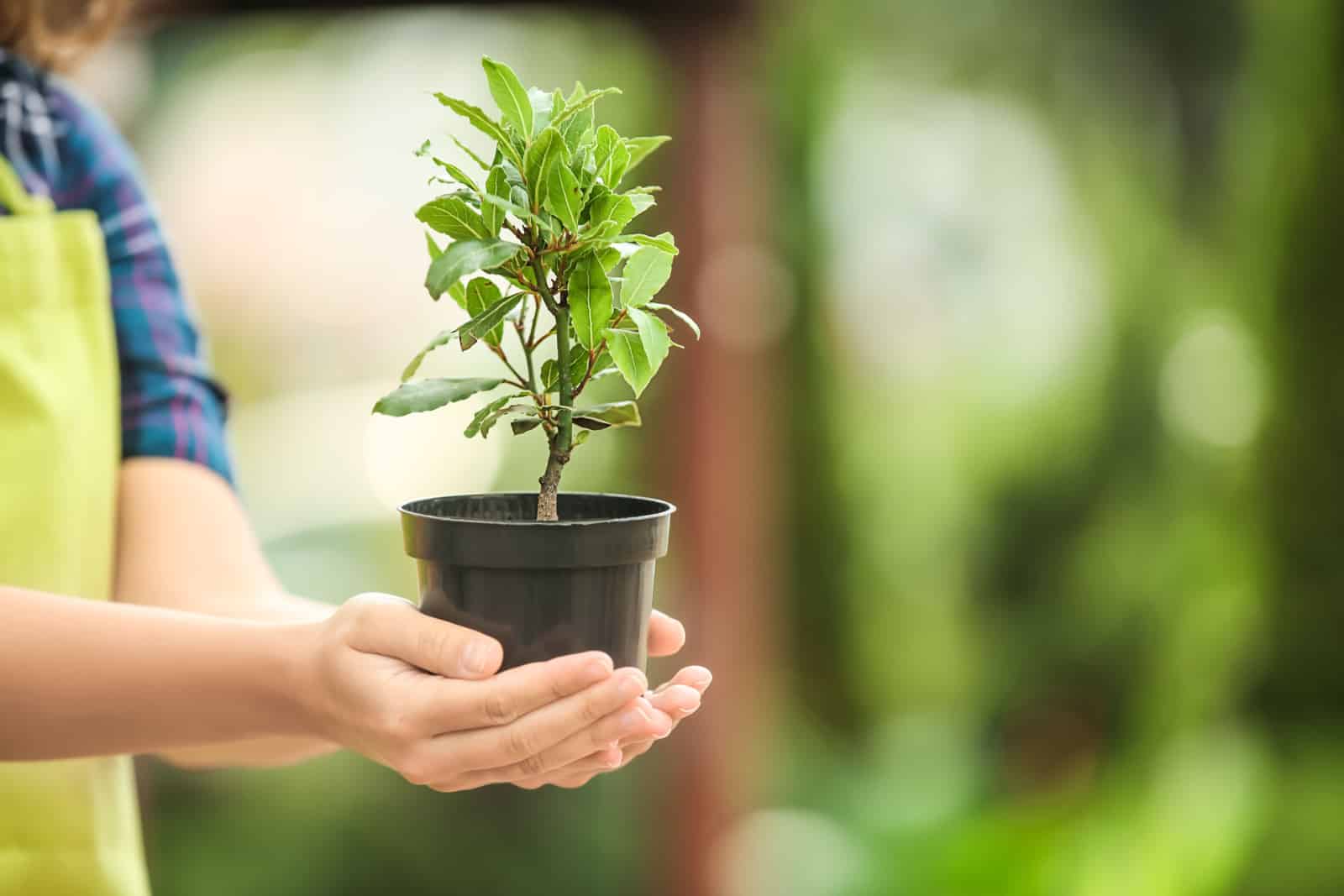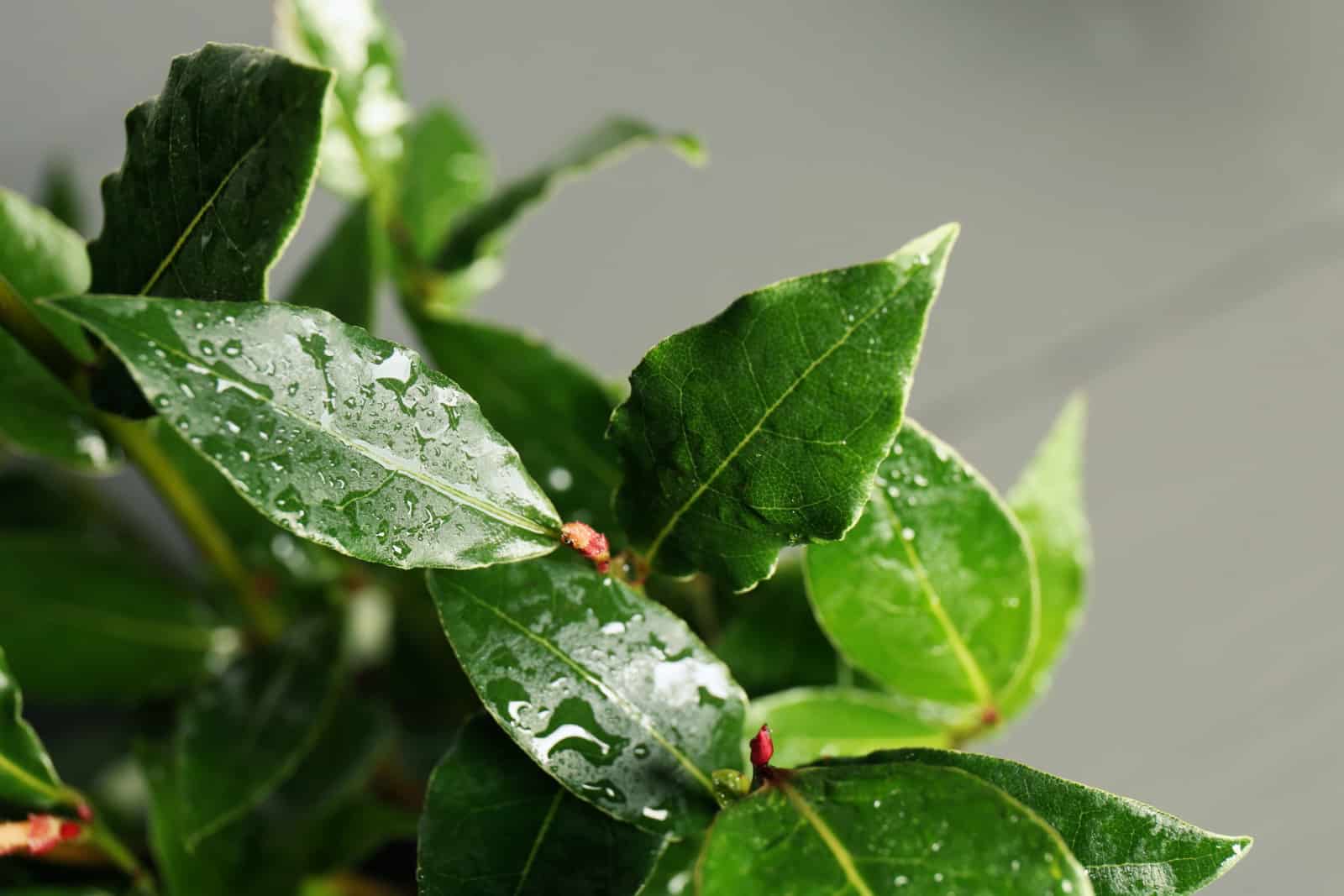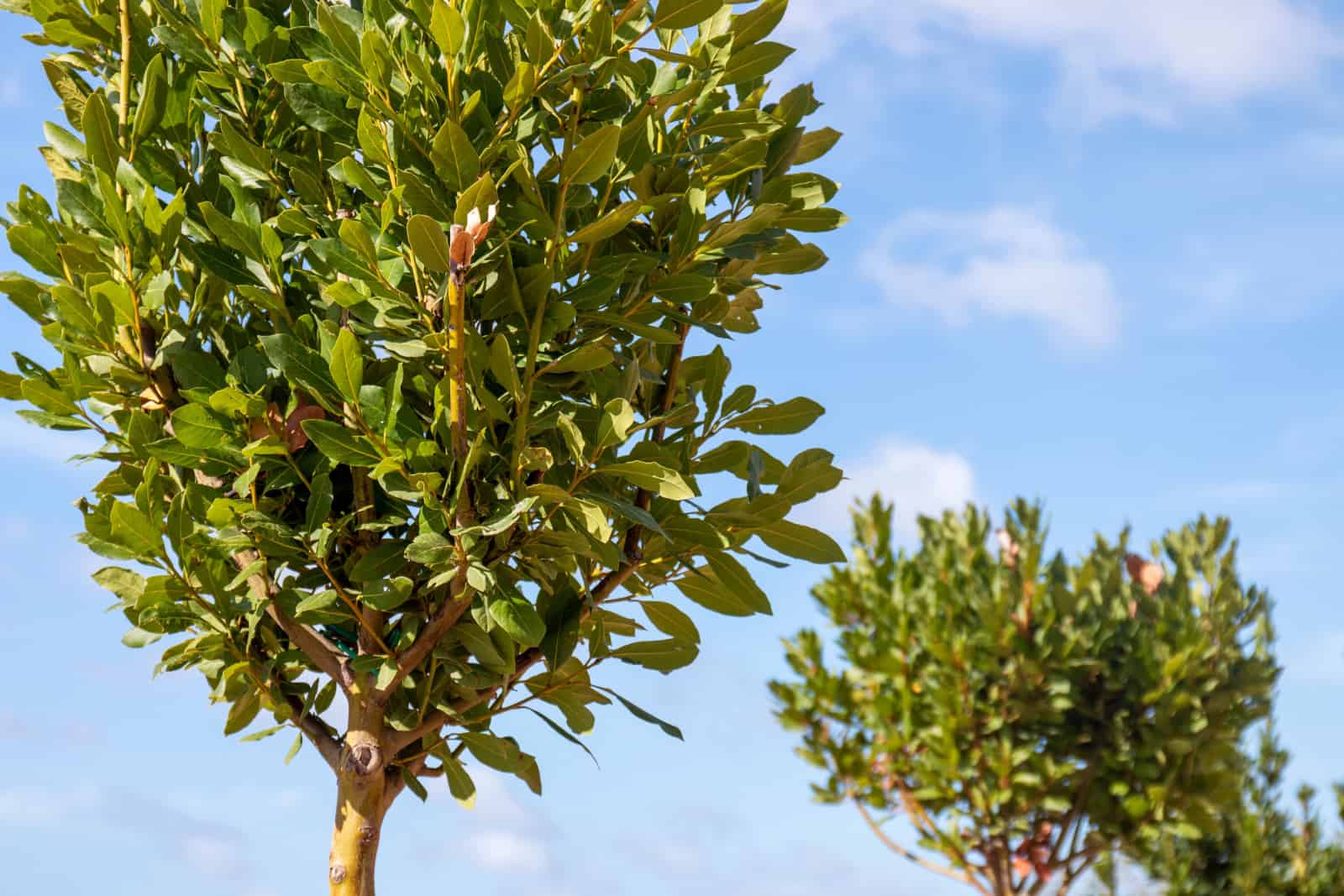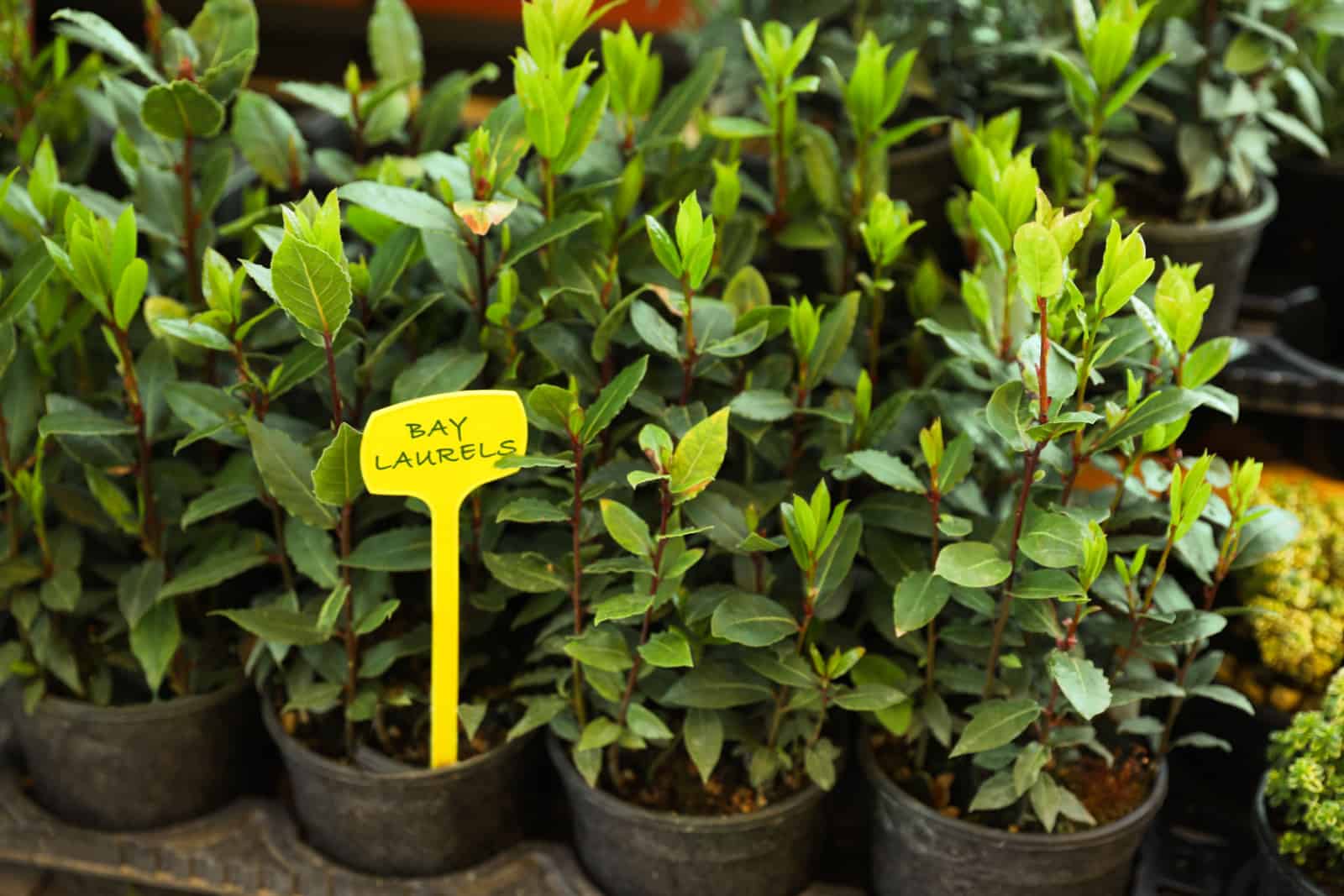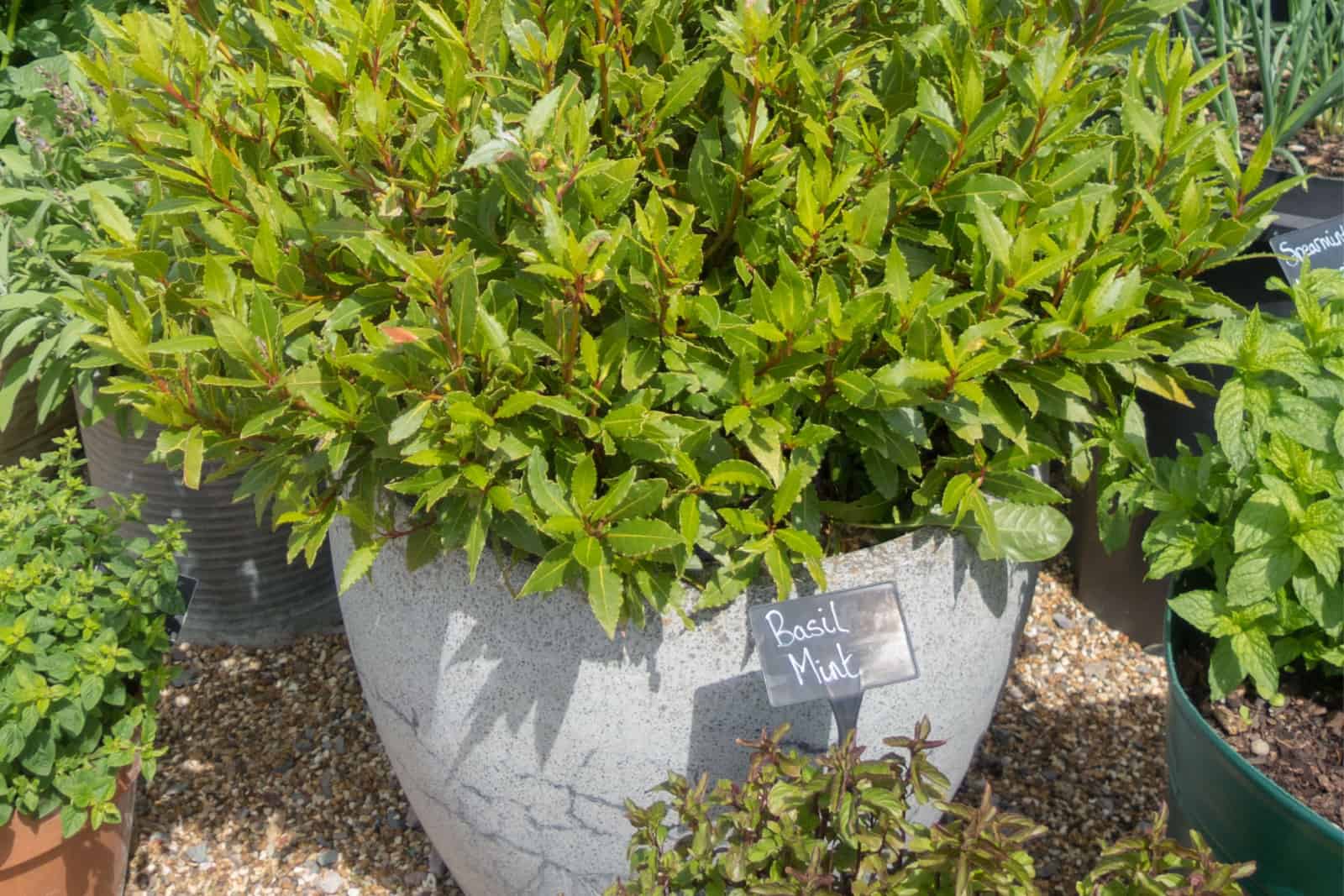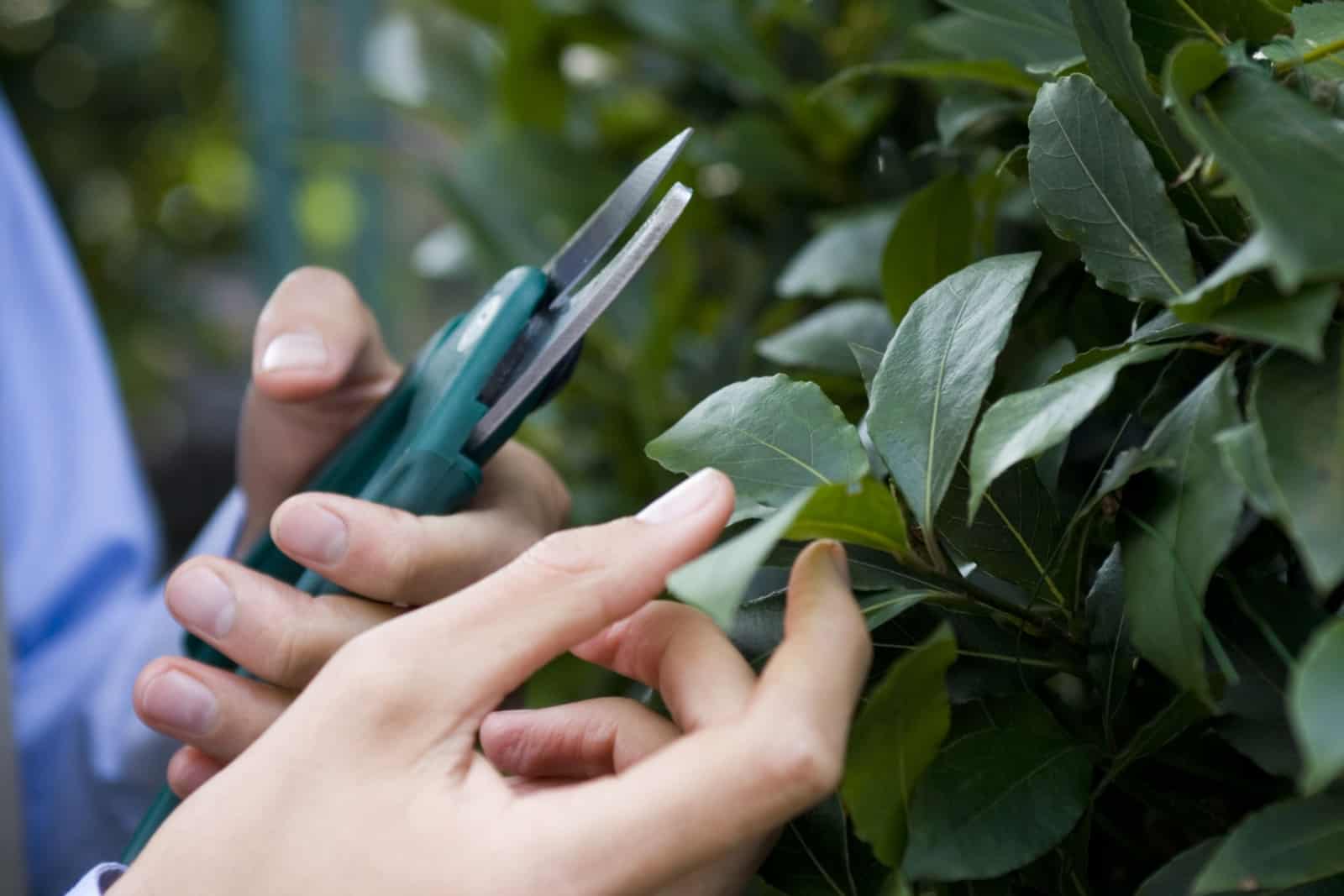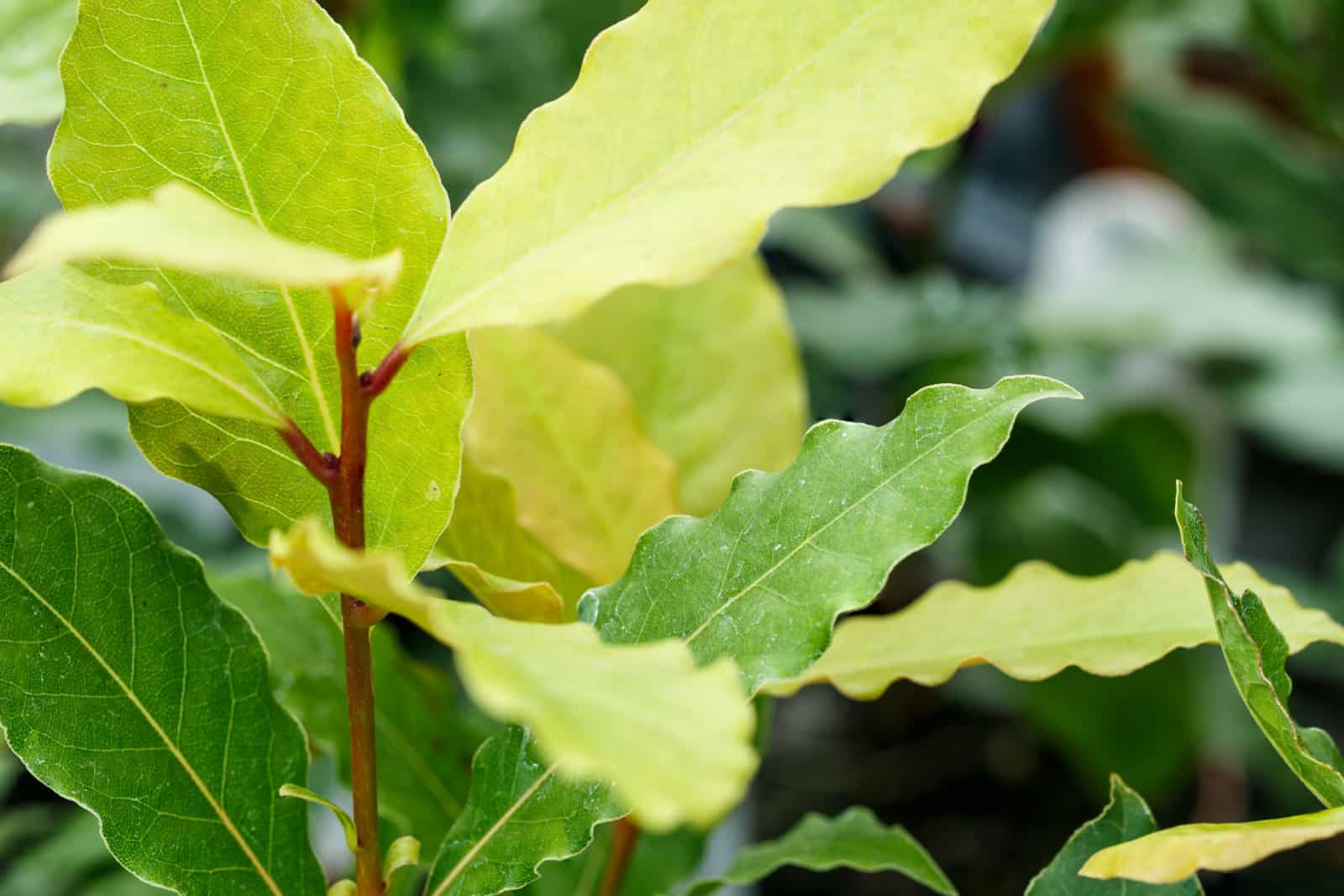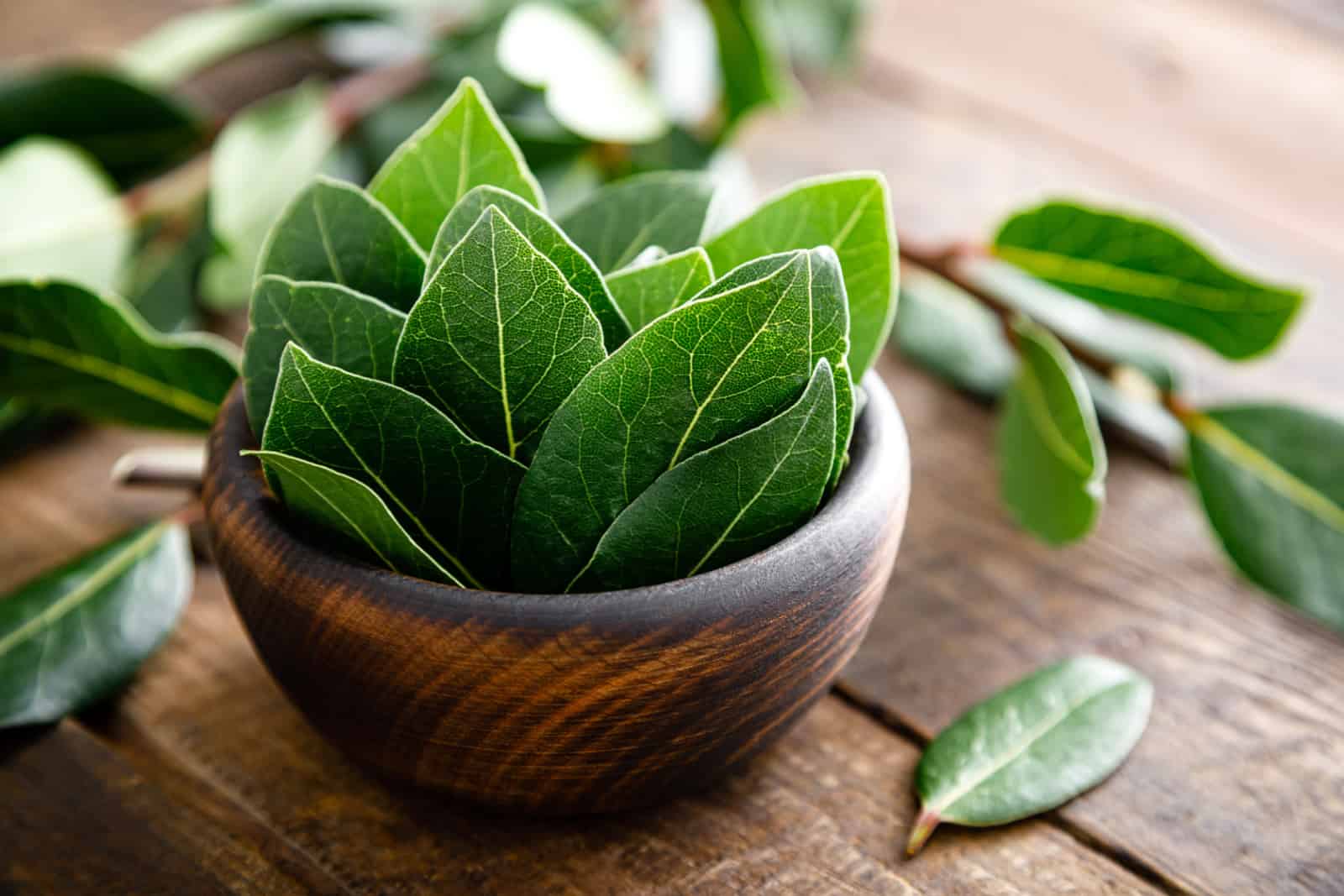Do you want to make your garden look luxurious and unique? Nothing will do a better job than a bay tree!
This Mediterranean plant has ensured a spot in gardens worldwide due to its alluring appearance. But beauty isn’t the only thing the bay tree has to offer. Its fragrance, taste, and medicinal properties make it a target for many plant hunters.
If you’re one of them, I’ll show you how to grow a bay tree and some of the best bay tree leaf uses.
Let’s dive straight in!
How To Grow A Bay Tree
Before you add this captivating plant species to your outdoor space, you should know its care requirements and how to make it happy and healthy for many years to come. Here’s everything you need to know!
Varieties To Select
There’s one misconception I should resolve regarding the Bay tree. It’s scientifically known as Laurus nobilis and it has a lot of nicknames, including Bay leaf and Bay laurel.
When purchasing this plant, you should be careful since some other plants, such as California bay go under the same name: Bay leaf. So, always check the botanical name written on the label.
Here are some of the most popular Bay tree cultivars.
1. Laurus nobilis f. Angustifolia: This cultivar features slender foliage with a captivating texture. It’s commonly referred to as willow-leaf laurel.
2. Laurus nobilis Undulata: If you need a bay tree for decorative purposes, the Undulata cultivar is a perfect choice. The leaves of this cultivar have wavy edges, making it truly unique.
3. Laurus nobilis Aurea: What’s fascinating about this cultivar is the color of the leaves. They are golden-yellow and brightest in the spring and winter.
4. Laurus nobilis Saratoga: This cultivar is perfect for smaller landscapes since it doesn’t exceed 25 feet. The leaves are bright green and good for seasoning food.
Temperature Requirements
Our plant choice is often limited by the climate we live in. If you live in USDA hardiness zones 8 through 10, you can plant Bay trees directly in the ground.
As mentioned, this tree is native to the Mediterranean, which means it’s used to warmer temperatures.
Its delicate leaves can’t survive cool temperatures, so consider growing this plant in containers so that you can move it indoors once the temperatures drop.
Soil Type
Soil type plays a vital role in Bay tree growth. The essential thing is not to plant the tree in soil prone to waterlogging.
So, the first thing to ensure is good drainage because excess water in the soil can lead to root rot.
The next factor to consider if you want to grow a Bay tree in the ground is soil acidity. Similarly to other herbs native to the Mediterranean, this tree performs best in slightly acidic soil types.
The best thing would be if you could perform a soil test before planting your Bay tree to check if it needs amendments for increasing acidity.
Do You Have Enough Space For A Bay Tree?
Many beginner growers avoid growing Bay trees due to their size. Well, the tree does grow slowly but over time it can reach 30 to 60 feet.
However, this is the estimated tree size and it will only get this big if left unpruned. This means that you can grow it if you have a smaller garden but you’ll need to prune it.
Don’t worry, pruning Bay laurel isn’t a hard task. I’ll show you how to do it in the following sections.
The Perfect Spot
If you live in warmer USDA zones and the soil meets Bay tree requirements, it’s time to find a perfect location.
This tree can tolerate full sun but a spot in partial shade will work better. This especially refers to climates with hot and long summers.
There’s a possibility that harsh sun rays will damage the tree, so choose a spot that receives shade in the afternoon.
Ideally, plant your bay tree near your kitchen so that you can take a leaf or two when cooking.
Planting Guide
Bay laurel can be grown from seeds but this propagation method takes a lot of time and effort. It’s always better to purchase young Bay laurel plants.
I highly recommend planting Bay tree plants in the fall or early spring to allow them to establish before warm summer temperatures arrive.
Here’s a guide on how to plant this tree directly in the ground.
1. Prepare the planting site: you should amend the soil with organic matter to boost the nutrient levels, promote drainage in heavy soils, or enhance moisture retention in loose soils. Organic matter does wonders!
2. Dig a hole deep enough to fit the Bay laurel root ball and make sure it’s twice as wide so that the roots have enough space to spread.
3. Put your young Bay tree in the hole and pack the soil around the base so that the plant stands firm and upright. Add water but make sure not to waterlog the soil.
4. Add a thin layer of mulch around the Bay tree base. This will aid soil moisture and temperature regulation, and discourage weed growth. Make sure the layer of mulch isn’t too thick because it will retain too much moisture, which can lead to waterlogging.
How To Grow A Bay Tree In Containers
The great news for all the growers in cooler climates is that Bay laurel can be successfully grown in containers.
The first thing to consider is the soil type. Just like a Bay tree planted in-ground, container-grown trees must have free-draining soil.
The great thing is that you can easily enhance drainage by amending the store-bought soil with well-draining materials, such as grit.
You’ll need to water your potted Bay tree once the upper part of the soil is dry. It will need more water during the hot summer months but never water already wet soil because it can attract pathogens.
Container-grown Bay laurel needs one dose of organic liquid fertilizer during late spring or summer.
Since this is a slow-growing tree, repotting is typically needed every 5 years. Take your Bay tree indoors when the temperatures drop significantly.
Creating A Topiary
Many growers decide on creating a Bay topiary. The best thing about this method is that you can prune your Bay into many different shapes.
The three most common shapes Bay tree growers decide on are pyramid, ball, and lollipop. For me, entwining the Bay tree into a spiral form looks most fascinating.
If you have a lot of experience pruning, try some unusual shapes, such as animals.
The best tool for creating Bay laurel topiary is secateurs. This tool is also good for many other problems; for instance, if you have arthritic hands, secateurs are here to help you.
Summer is the best season for pruning the Bay tree; it will help the plant retain a more compact shape and make it easier to get the shape you have in mind.
Hedging
Another great way to use Bay trees is hedging. Many growers have asked me how many trees they need to buy when making a hedge.
Well, if you purchase bare root Bay laurels, you need to plant them in double rows and the spacing between each should be approximately 13 feet.
If you decide on buying root balls or container-grown Bay laurels, you’ll need approximately 2 plants per 3 feet.
How To Prune Bay Trees
If you don’t want a hedge or topiary and prefer to cultivate a single tree, you’ll need to prune it lightly during the summer. This will help you maintain the size and shape and won’t affect the growth of your Bay tree.
All you need to do is trim off the lower leaf or a flower bud.
If your Bay laurel is fully mature, you don’t have to worry much about pruning. You can prune a bit but expect your tree to grow slower and need more time to display new growth if you do.
Generally speaking, you need to prune your mature Bay leaf every 3 years. Prune in the spring or early summer to allow your Bay leaf to recover before the growing season.
Watering And Fertilizing Bay Trees
We mentioned how to water and feed potted Bay leaf plants. Now it’s time to discuss those needs when it comes to trees planted in the ground.
Bay leaves can tolerate drier soils but, of course, not for a long period. If unsure, it’s always better to wait a little longer to water your Bay tree than to overwater it.
Remember, it’s easier to save dehydrated plants than overwatered ones.
Once the soil of the Bay tree is dry to the touch you can add water.
These trees aren’t heavy feeders and too much fertilizer can do more damage than not adding fertilizer at all.
The best thing would be to feed your Bay laurel every few weeks during the growing season, i.e., the summer months.
When feeding, use a mild organic fertilizer and make sure to prepare it following the instructions written on the label.
Common Bay Tree Problems
Even though the Bay leaf isn’t a sensitive plant, it’s not really problem-free. The truth is that we are the responsible ones for the majority of Bay leaf problems. Let’s see what can go wrong!
1. Yellow foliage: If you’re growing any other plants, I’m sure you know that overwatering is typically the cause of yellow leaves. Bay leaf isn’t an exception. If the soil moisture content isn’t too high, then cold temperatures or a lack of nutrients may have caused yellowing.
2. Brown foliage: Similarly to yellowing, browning can occur due to poor drainage or cool temperatures. Another reason for brown bay leaves can be dehydration.
3. Curling: One of the most common causes of curly Bay tree leaves are bay suckers. These grayish-white insects aren’t detrimental to the tree, but you should remove them to avoid any issues. Pick them with your hands and discard the affected foliage.
4. Leaf spot: Too much water in the soil can cause leaf spots on your Bay tree. If you grow the tree in a container, you should repot it and add compost.
5. Peeling bark: Low temperatures can cause Bay tree bark to start peeling. This looks unsightly but doesn’t pose a serious problem for the tree. As soon as the temperatures increase, your Bay tree should be back on track.
6. Insects: The most common pests in Bay trees are horse chestnut scale. These nuisances usually hide on the leaf undersides and in most cases, there’s no need to remove them. If the infestation is severe, you need to use some pest control methods.
From my experience, attracting beneficial insects, such as parasitoid wasps, is the best way to get rid of scale in Bay trees.
How To Dry Bay Tree Leaves
Before I show you how to use Bay tree leaves, you need to know the drying process.
Always harvest the leaves in the early morning so they retain essential oils.
Put the leaves on a paper towel and make sure they aren’t in contact with one another. Find a warm spot in a room with good air circulation to prevent mold.
It typically takes 2 weeks for the Bay tree leaves to dry out. You need to turn each leaf over after a week. If the leaves aren’t entirely dry after 2 weeks, you can leave them a little bit longer.
Another option is to put Bay tree leaves in a food dehydrator.
When the leaves are completely dry, put them in a glass jar and seal tightly.
5 Bay Tree Leaf Uses
Now that you know everything about growing Bay trees and have harvested and dried the leaves, it’s time to see what you can do with them.
Here are the 5 most common Bay tree leaf uses.
1. Cooking: The leaves of Bay laurel are edible and have a peppery scent and clove-like flavor. They are a part of the bouquet garni, which is a bundle of herbs tied with a string and used in French cuisine.
2. Wound healing: Bay tree leaves can be used for treating wounds (1).
3. Pest repellent: The strong scent of the Bay laurel leaves repel pests, so you can make a spray and use it for treating pests in your plants.
4. Hair tonic: If you have issues with dandruff, you can make a hair tonic with bay leaves.
5. Air freshener: You can make homemade air fresheners by burning a few bay leaves in an ashtray; the smoke will spread and your room will smell beautiful.
Bay trees aren’t fussy over growing conditions, look breathtaking, and have many excellent uses. Well, there’s really no reason why you shouldn’t add this spectacular plant to your landscape. Keep it happy and healthy using our tips, and it will adorn your space for many years.
References
1. Batool, S., Khera, R. A., Hanif, M. A., & Ayub, M. A. (2020). Bay Leaf. Medicinal Plants of South Asia

